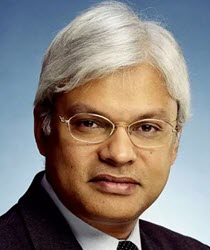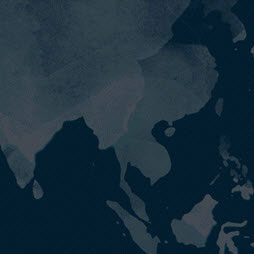U.S. Alliances and Partnerships in the Pacific Century
Ashley J. Tellis (Carnegie Endowment for International Peace) discusses some of the main research findings from NBR’s forthcoming volume, Strategic Asia 2014-15: U.S. Alliances and Partnerships at the Center of Global Power.
To mark the release of the fourteenth volume in NBR’s Strategic Asia series—Strategic Asia 2014–15: U.S. Alliances and Partnerships at the Center of Global Power—we spoke with Strategic Asia Research Director Ashley J. Tellis (Carnegie Endowment for International Peace) about the topic of this year’s book: the trajectories of U.S. alliance and partner relationships in the Indo-Pacific. As the locus of global power shifts toward Asia and the region undergoes dramatic change, the United States maintains enduring interests in the region’s stability and order. Now, as in the past, alliances and partnerships with Indo-Pacific nations will be a central factor in enabling the United States to secure these interests.
In this interview, Dr. Tellis discusses the volume’s findings and highlights the strong demand for U.S. leadership among regional allies and partners. He argues that in order to maintain stability in Asia, the United States must strengthen its own power and capabilities in the region.
This year’s Strategic Asia volume finds that the alliances and partnerships the United States has built over the past several decades have been and will continue to be a central component of U.S. grand strategy. How do these critical relationships support U.S. interests in the Indo-Pacific region?
The central challenge that the United States faces in Asia today is how to create conditions for stability in the face of very dramatic change, whether that change is manifested in terms of economic growth, or societal transformations, or changes in leadership. So, from a U.S. point of view, the question really is, how do we protect the American regime that has been in place since the end of World War II so that Asia might continue to enjoy the benefits of stability despite these changes?
Now, in this context, I think U.S. alliances and partnerships become critical for several reasons. First, the partners actually bring capabilities to the order-producing function, which allows the United States to create a whole that is greater than the sum of its parts. So there is an additive capability that comes with our partnerships.
The second is legitimacy—because the United States does not always need to act alone, but can act with other confederates, its actions enjoy greater legitimacy than they otherwise might have.
The third is that having a robust set of partners frees the United States to pursue unilateral interests when the equities of the partners are not involved. The partnerships provide a certain cushion that allows the United States to use its resources to advance goals that might be of interest to itself but not to others.
All three considerations come into play when thinking of U.S. partnerships in Asia.
Like previous volumes, Strategic Asia 2014-15 features country-specific chapters that examine the particular characteristics and developments of each nation’s relationship with the United States. What are some common themes found across these oftentimes very different relationships?
There are three big themes that become transparent in the volume. First, there is a great demand for U.S. leadership and for the traditional American role of creating a regional order that is peaceable and that enables prosperity. So irrespective of the country, whether it is a formal ally or informal partner, there is uniformly a demand for U.S. leadership. That is the first key theme in the volume.
The second idea that comes through is the diversity of relations that the United States enjoys in Asia. You have everything from tight alliances with Japan and Korea, to semiformal arrangements with a country like Singapore, all the way to very productive, but still explicitly non-alliance, relations with a country like India. So the diversity of relationships that the United States enjoys in the Indo-Pacific is really quite striking. Yet every one of those relationships has its own unique value. This is not a case of one size fits all.
The third theme that I would flag is that every country in the region is struggling with a common challenge: how to deal with the disequilibrium caused by China’s rise. These countries each have their own ways of dealing with that problem, some unilaterally, some looking to bilateral ties, still others looking for comfort in multilateral relations, but in all cases China looms large. Every one of the Asian countries is struggling to meet two objectives simultaneously: maintain a productive economic relationship with China, while at the same time protecting itself against challenges that might be posed by China’s rise. Those are the three big themes that are reflected in every chapter in different ways.
In your introductory chapter, you argue that, paradoxically, the utility and strength of U.S. alliances and partnerships is greatest when U.S. power is most robust. Why is this the case? What are the implications for U.S. relationships in Asia in the near future as budget constraints and isolationist sentiment affect U.S. presence in the region?
It is a paradox because you would think that when U.S. power weakens, the utility of others’ contributions would stand to increase, and I think that in the abstract that is absolutely true. Yet cohesive action becomes harder in such circumstances because to create cohesion, there are transaction costs that have to be borne by all the players involved—and the alliance partners, being rational egoists, invariably want to shift those costs onto others. Everyone wants the benefits of having a cohesive and effective alliance, but not everyone wants to pay the price for producing those attributes.
So how do you defeat this corrosive dynamic? You defeat it only to the degree that one country is willing to disproportionately bear the costs of assembling the coalition. To the degree that the United States and its power are robust, Washington’s capacity to bear those disproportionate costs increases, and that makes it easier to forge the alliances that it needs. If the United States weakens, then by extension its capacity to bear those disproportionate costs decreases. Even though the need for partners at that juncture may be greatest, partners are hardest to find because not everyone wants to bear the transaction costs associated with a more equal coalition.
The challenge in any alliance relationship is always the problem of opportunism and the dilemmas of managing the would-be free-rider. In an alliance partnership, every state wants the benefits of the alliance but at the least cost to itself, so each hopes that someone else will bear that cost while it continues to enjoy the benefits.
I think it is this dynamic that explains the paradox that I flag. The stronger the United States is, the greater its capacity is to bear the transaction costs of assembling the posse and managing it. To the degree that the United States weakens, that capacity to assemble the coalition weakens as well.
Your introductory chapter and the findings of the volume support the idea that the United States’ allies and partners value and desire a strong U.S. presence in the Indo-Pacific. China, however, often sees the U.S presence, and policies such as the rebalance, as aimed at countering its rise. How can the United States balance maintaining its interests in the region, which include supporting its partners, with improving its tense relationship with China?
It is important that the United States make the effort to pursue both objectives simultaneously—that is, to build up its capacity to protect its alliance partners while, to the degree possible, reassuring China about U.S. intentions and objectives. But I think there is no assurance that we ever will get that balance right. So the question becomes, if something has to give, what gives?
My sense is that, historically, countries have erred on the side of protecting their partners rather than reassuring their competitors. Of course, if possible, you want to do both—you want to try to steer a course of action that does not make the security dilemma with China worse, while at the same time protecting your friends and allies.
But if the two ever came into tension, I cannot imagine that the United States would forsake its obligations to its friends and partners in order to advance the objective of reassuring China, because then you end up potentially getting the worst of both worlds. You may not be able to reassure China enough, and in addition you may lose your friends and allies in the process if they become convinced that you value engaging the adversary more than you value protecting them.
This is a dilemma that the United States will have to grapple with for many decades. It is not a problem that will go away unless China fundamentally falters.
What are the most significant challenges that the United States faces in strengthening its alliances and strategic partnerships in Asia, and what can the United States do to address them?
There are three challenges that the United States must think seriously about when it reflects on its alliances and the future of the Indo-Pacific order. The first is the challenge of revitalizing or rejuvenating itself, and this goes to the paradox we discussed earlier. If the United States is not strong, it denies itself many options, including the option of having strong allies, to deal with the uncertainties of the global system. So the first-order challenge is that the United States has to get its own house in order—in respect to both its own economy and its own politics.
Challenge number two is the need to be able to pursue multidimensional policies with subtlety and sophistication. There is always a temptation when you are pursuing policies that have inherent tensions to tilt to one pole of the dilemma to the detriment of the other. How we pursue our policies in the Asia-Pacific will matter just as much as what those policies are.
There will be a real premium on subtlety and sophistication. In the past, this may have been less necessary because we had very clear adversaries and very clear divides between friends and enemies, so subtlety was optional. All the United States needed to be was capable and robust, and those two virtues took care of most problems. Today, when the lines between who is a friend and who is an adversary are a little blurrier, and when we have deep economic ties with countries that are our competitors, the need for subtle policies becomes more important.
Third, at the end of the day, our ability to protect the American regime in Asia will be a function of our hard power. There is no getting away from that fact. We may be polite about how we describe that reality, but the fact is, as Mao put it correctly, power does grow out of the barrel of a gun. In the Indo-Pacific, power essentially means the power to protect one’s friends in the face of adversaries and uncertainty.
So the United States has to find ways, in spite of its financial troubles, to make sure the instruments of deterrence and defense are kept in good repair. Depending on the state of these instruments, all the nations of the region, including our friends and allies, will be making their own course corrections. We want to make certain that whatever corrections other countries engage in, they are corrections that advantage us, not undermine us. There is no alternative, therefore, but to have a set of capabilities that are very robust and that guarantee our friends the protection they seek. If we can do that right—keep our military capabilities in fine shape—I think it will provide the kind of reassurance that produces success.
This interview was conducted by Alison Szalwinski, an intern with the Political and Security Affairs group at NBR.



